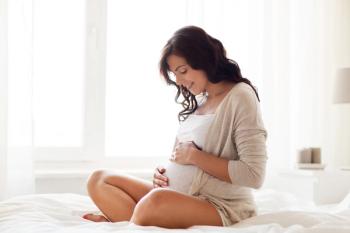
Hormone therapy linked to positive changes in appearance congruence, mental health for transgender and nonbinary youth
In what investigators are calling the largest study of its kind ever conducted in the US, results of the 2-year study, which included more than 300 transgender or nonbinary youth, underline the positive benefits seen with receipt of gender-affirming hormone therapy among this patient population.
The largest study of its kind ever conducted in the US is underlining the impact of gender-affirming hormone therapy on psychosocial function and
A multicenter study of more than 300 transgender and nonbinary youth funded by the National Institutes of Health (NIH), results of the study indicate undergoing
"Our results provide a strong scientific basis that gender-affirming care is crucial for the psychological well-being of our patients,” said lead investigator Robert Garofalo, MD, MPH, codirector of Lurie Children’s Gender and Sex Development Program and professor of Pediatrics at Northwestern University Feinberg School of Medicine,
Named the Trans Youth Care–United States (TYCUS) Study, the current study was designed as a prospective, observational study with the intent of evaluating physical and psychosocial outcomes associated with undergoing gender-affirming hormone therapy in transgender and binary youth in the US. Participants included in the study were aged 12-20 years old and were recruited from gender clinics at theAnn and Robert H. Lurie Children’s Hospital of Chicago, UCSF Benioff Children’s Hospitals, Boston Children’s Hospital, and Children’s Hospital Los Angeles from July 2016-June 2019.
Per study protocol, study visits occurred at baseline and again at 6, 12, 18, and 24 months after treatment initiation. During these visits, participants completed the Transgender Congruence Scale, the Beck Depression Inventory–II, the Revised Children’s Manifest Anxiety Scale, and the Positive Affect and Life Satisfaction measures from the NIH Toolbox Emotion Battery. Investigators noted 2 distinct cohorts were created as part of TYCUS, a cohort assessing effects of gender-affirming hormone therapy and another assessing the effects of gonadotropin-releasing hormone agonist therapy. The current study only reported on the effects of gender-affirming hormone therapy.
For the purpose of analysis, latent growth curve modeling was used to estimate trajectories of appearance congruence, depression, anxiety, positive affect, and life satisfaction over a 2-year period. Investigators noted additional analyses were planned to investigate how initial levels of and rates of change in appearance congruence correlated with each psychosocial outcome of interest.
A total of 315 participants with up to 5 follow-up visits were identified for inclusion in the study. From this cohort, a total of 6114 observations were recorded during the study period. This cohort had a mean age of 16±1.9 years, 60.3% were transmasculine, 64.8% were designated female at birth, and 58.7% were non-Latinx or non-Latine White. Investigators pointed out 2 participants died by suicide during the study and 6 withdrew before completion, but data that had been collected before death or study withdrawal were included in the analyses.
During the follow-up period, scores for appearance congruence increased (annual increase on a 5-point scale, 0.48 points [95% CI, 0.42 to 0.54]; standardized β=1.47) as well as T scores for positive affect (annual increase on a 100-point scale, 0.80 points [95% CI, 0.08 to 1.54]; β=.19) and life satisfaction (annual increase on a 100-point scale, 2.32 points [95% CI, 1.64 to 3.00]; β=.52). Additionally, investigators observed decreased scores were observed for depression (annual change on a 63-point scale, -1.27 points; 95% CI, -1.98 to -0.57; standardized β=−.29) and T scores for anxiety (annual change on a 100-point scale, -1.46 points [95% CI, -2.13 to -0.79]; β=-.35).
Further analysis demonstrated increases in appearance congruence were associated with concurrent increases in positive affect and life satisfaction and concurrent decreases in depression and anxiety symptoms. During the study period, the most common adverse event was suicidal ideation, which was reported in 11 (3.5%) individuals.
“Our results provide robust scientific evidence that improved appearance congruence secondary to hormone treatment is strongly linked to better mental health outcomes in transgender and nonbinary youth,” said study investigator Diane Chen, PhD, pediatric psychologist with the Gender and Sex Development Program at Ann & Robert H. Lurie Children’s Hospital of Chicago and associate professor at Northwestern University Feinberg School of Medicine, in the aforementioned statement. “This is critical, given that transgender youth experience more depression and anxiety, and are at a higher risk for suicidality than cisgender youth.”
This study, “
Newsletter
Get the latest clinical updates, case studies, and expert commentary in obstetric and gynecologic care. Sign up now to stay informed.











